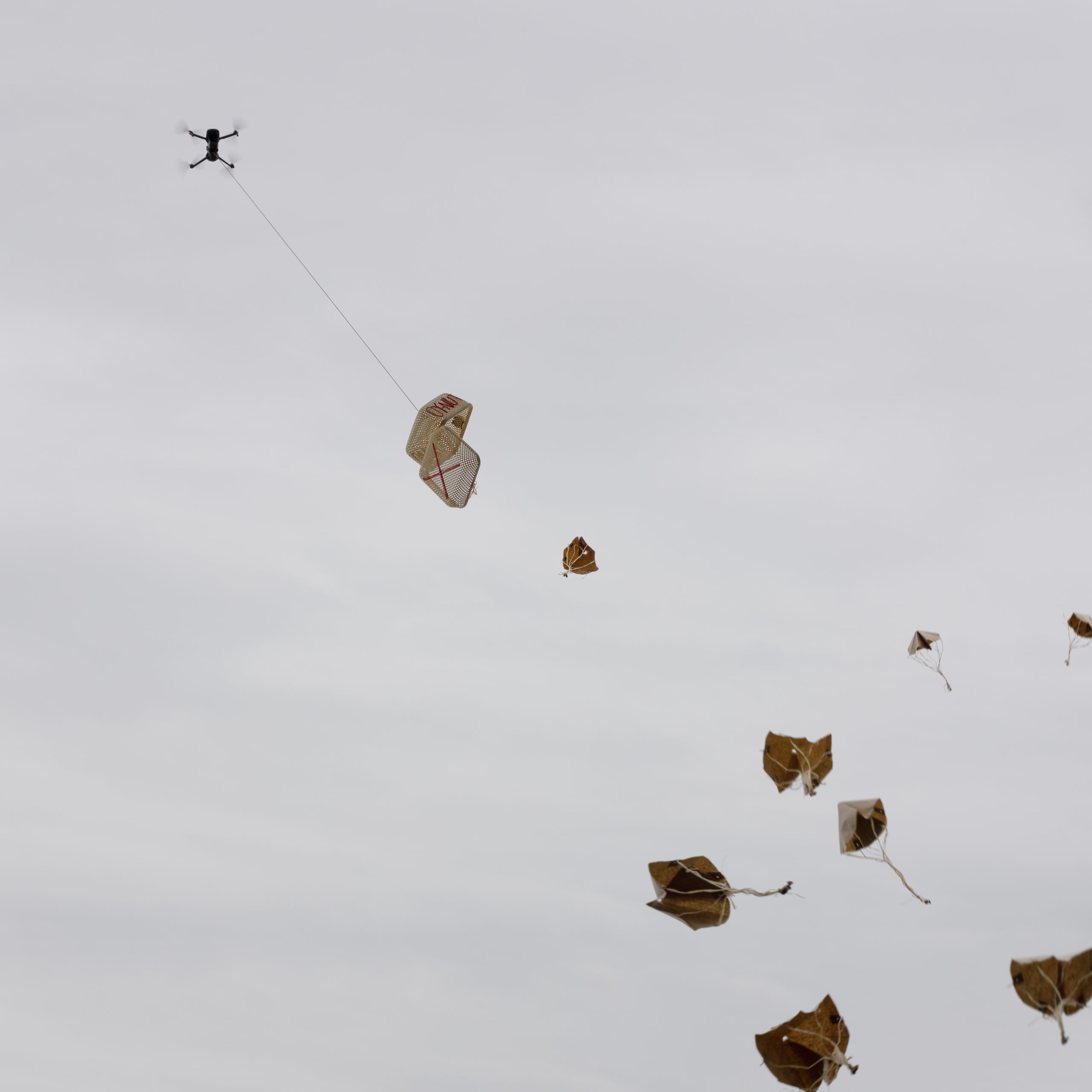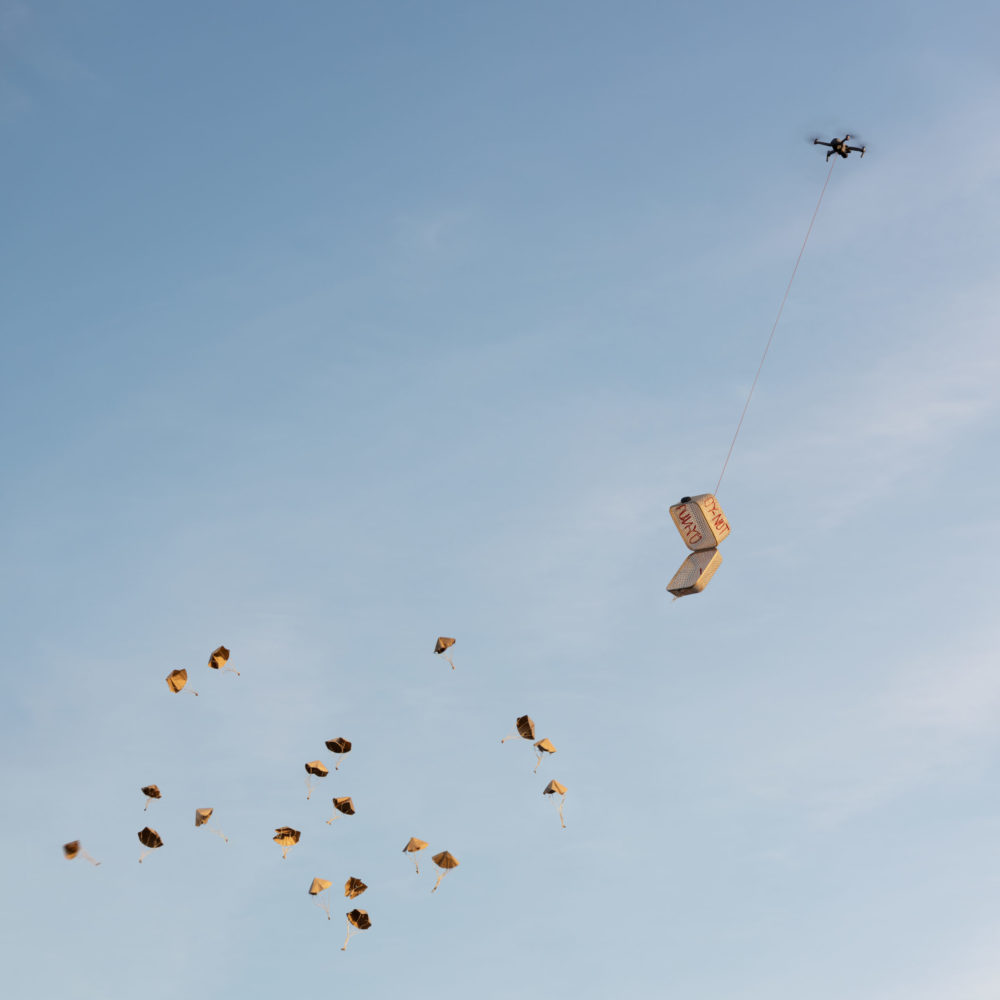Autonomous trees
Krzysztof Wronski
Krzysztof Wronski is a researcher, designer, and artist intervening in emergent and urgent spaces. In his artistic practice, Krzysztof creates research-driven conceptual works about social and ecological challenges. His work promotes dialogue, participation, and exploration around potential alternatives. Krzysztof Wronski’s Tree-Centred Design workshops—a reflection on Human-Centred Design methods—explore how technology and innovation processes could or should change to address the current and emerging needs of trees and forests. As an artistic resident of the Dear2050 program organized by Climanosco, Krzysztof Wronski has been collaborating with researchers from the Plant Ecology Research Lab in Lausanne, Switzerland.
Autonomous Trees
Aerial relocation assistance
2023, Artist Residency Climanosco @ PERL EPFL
Installation
Based on the latest research around how human-caused climate change threatens trees and forests, Krzysztof is developing a series of artistically-driven interventions to help living trees, assisted by humans, better cope with stress from heat, drought, and other harmful conditions. Autonomous trees focuses on experimenting with and questioning how and if technology and other resources could be used to give trees enhanced capabilities or agency. Where would trees move to be more comfortable? What would a tree wish for their offspring? How would our relationship with trees change if we had dialogue? Based on collaboration with researchers from the Plant Ecology Research Lab in Lausanne, Switzerland, the interventions are being explored, and are all works in progress, not intending to prescribe solutions, but to promote reflection about our impact on other species, how we prioritize them, and the resources it may take to ensure their survival.
For his intervention Aerial relocation assistance Krzysztof Wronski is exploring playful approaches relating to the concept of assisted population migration, the act of moving seeds to new locations within the historical range for a particular species. He used a commercial drone, a remotely operable basket, and a series of biodegradable parachutes made of kraft paper and straw, to take acorns dropped from oak trees near the urban and built environment and relocate them to locations where they have a greater chance to thrive in the long-term. The tools and practice can also be used to make a political statement, for example, by dropping acorns onto a golf course to challenge the practice of managing landscapes in highly humanistic and structured ways.


